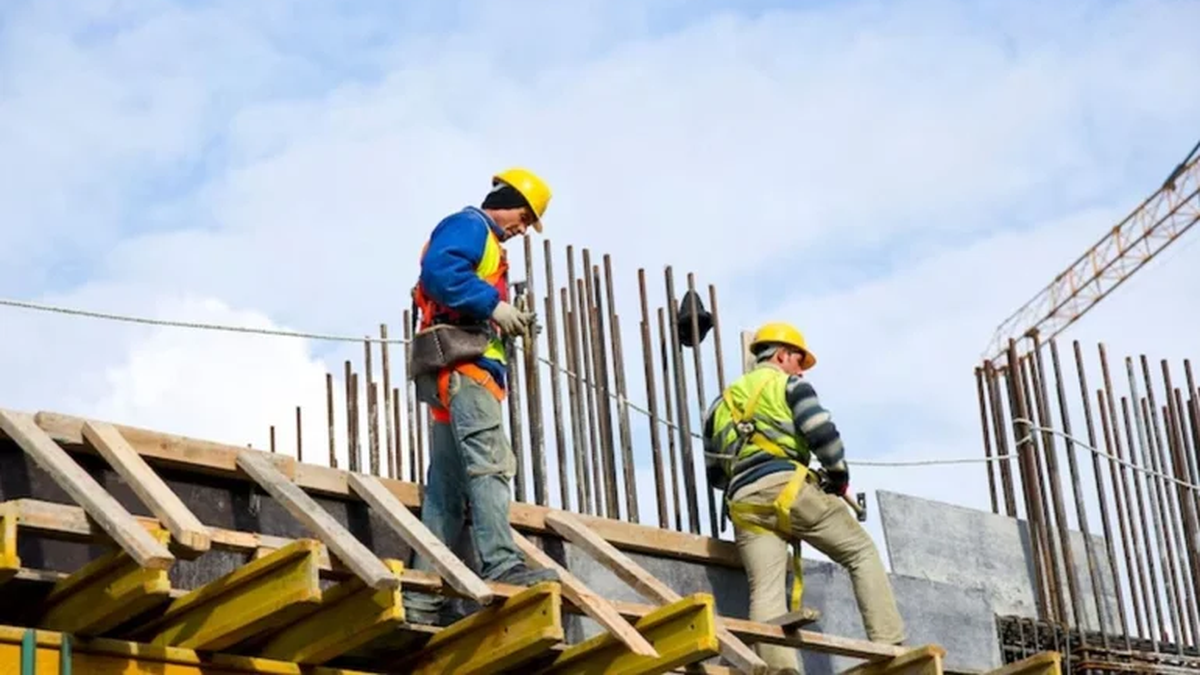The marked sector heterogeneity presented by the current growth model and the strong brake that economic activity had in March has a greater negative impact in some regions of the country, due to the character of its productive structures. Provinces of the North, the South and the area whose are among the most affected by the election of “winners” and “losers” by the government of Javier Milei.
After 10 months of fast reactivation, the economy suffered a tough blow in March, by sinking 1.8% monthly. Likewise, the monthly estimator of Economic Activity (EMAE) of INDEC was 0.4% below the level of March 2023.
Compared to the level of two years ago, the sectors that fell most were the Construction (-19.1%), the manufacturing industry (-16.8%), trade (-7.3%) and restaurants and hotels (-5.3%). Of those three, only trade showed an important rebound in recent months.
At the other extreme, the agricultural and energy and mining sector were the best performance since the arrival of the libertarians to Casa Rosada. This duality of the economy, which rewards little intensive areas in employment generationHe explains why the rebound in the activity was accompanied by a loss of jobs.
What are the provinces most affected by sector heterogeneity?
When observing the provinces that suffered the greatest destruction of jobs, in percentage terms, since the last peak of August 2023, they can identify Three areas such as the most affected: districts near the Andes mountain range (San Juan, La Rioja and Catamarca), Northeast (Santiago del Estero, Chaco and Formosa) and Patagonia (Santa Cruz and Tierra del Fuego).
The common denominator in almost all these provinces, with the exception of Tierra del Fuego, is that The greatest loss of jobs was verified in constructionas a consequence of the paralysis of public works throughout the national territory. This makes sense since, within the eight provinces mentioned, there are the five with the greatest weight of construction within its Gross Domestic Product (GDP).
These are Formosa, San Juan, Catamarca, Santa Cruz and La Rioja, according to data from the Economic Commission for Latin America and the Caribbean (ECLAC). In parallel, in Santiago del Estero and Chaco, where commerce uses most of its population, it was Relevant employment fall in the segments of sale of construction materials, as well as in the industrial manufacture of cement, concrete and plaster.
The impact on the provinces of the crisis in the textile and electronics industry
As for the manufacturing industry, the sector of clothing, footwear and textile products He was one of those who explained most of the negative impact on the areas in question. According to INDEC, textile production was in April of this year a 14% lower than the same period of 2023, while the clothing contracted almost 8%, a product of both lower consumption and the growing commercial opening.
Promptly, He highlighted his incidence in La Riojaone of the jurisdictions with a more relevant weight of this sector in its GDP. According to the production map prepared in 2022 by the Center for Production Studies (CEP-XXI) and the Ministry of Labor, the industry is the sector that generates the most employment in La Rioja, with 27% over the total, while the textile and clothing division concentrates almost half of that industrial employment.
In dialogue with Scope, Federico BazánMinister of Labor, Industry and Mining of La Rioja, stressed that between 2024 and 2025 registered more than 600 layoffs and more than 600 suspensions in the Industrial Park, in a context of strong fall in demand. The official highlighted the investments that reach the province and the productivity of its factories, which are being relegated by the measures of the national ruling.
Top, Bazán expressed uncertainty for the impact of the commercial opening promoted by the national government, “without any measure that protects the local work and industry.” “From the province the tools we have to alleviate the effects of national economic policy are scarce. However, we have shown a clear support for the industry, with measures such as tax exemption, as long as they meet certain requirements“He said.
The textile crisis was also the cause of an important portion of the destruction of jobs in Santiago del Estero. In the same way, in Chaco A significant decline was observed in the cost -sales activity.
For its part, Tierra del Fuego was mainly affected by the shrinking of the electronics industrywhose production collapsed more than 24% in two years and is threatened by the recent reduction of tariffs driven by the government. The industry is the most important sector of the most southern district in the country, while the electronic complex represents two thirds of industrial employment.
Economic activity: negative impacts are distributed throughout the country
Regarding the gloomy situation of the restaurant and hotels sector, it was also the most suffered one of the mostsince it is there where this item is of greater importance in the provincial productive structure. His neighbor San Juan was another one of those affected by this combo of stagnant consumption and exchange delay.
In addition, the negative effects of the economic plan were also reflected in a Loss of jobs in health and teaching services in San Juan, transport services in La Rioja and fishing in Santa Cruz. In the first two cases, the deterioration of the state of the State at all levels can be associated, while the case of the Patagonian province was reflected in an important setback of the exports of sea products.
From these data it can be seen that the negative impacts of the Dynamics of economic activity are distributed throughout the countryboth in provinces with low PBI per capita (as those of the north or whose) and in provinces with higher inhabitant (such as Santa Cruz or Tierra del Fuego).
Source: Ambito




